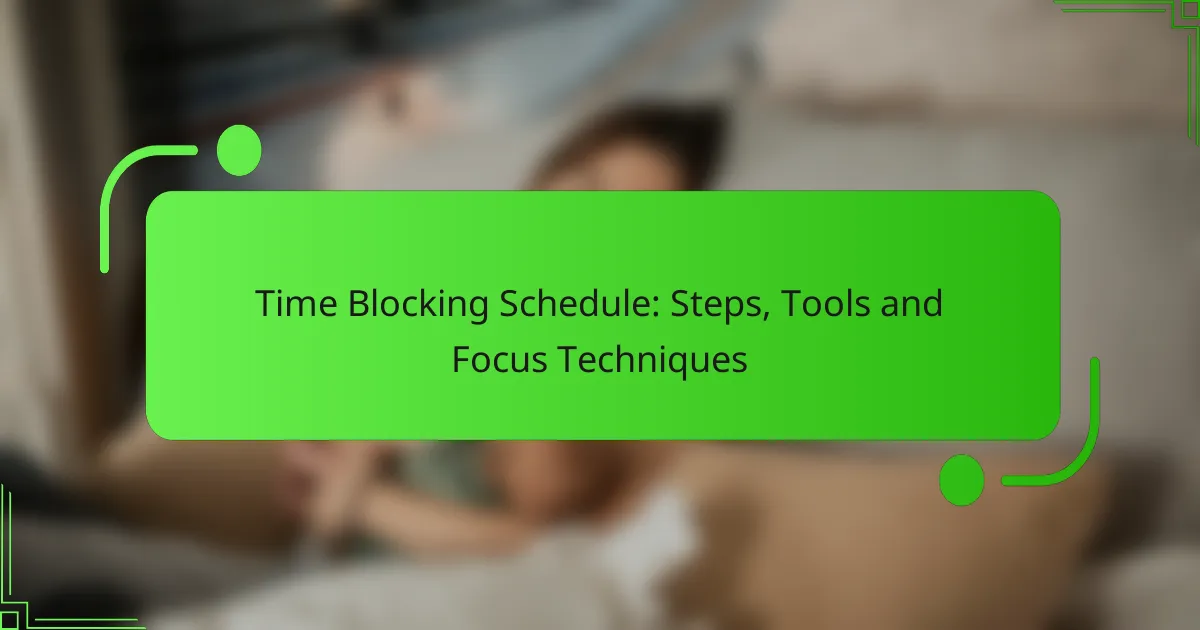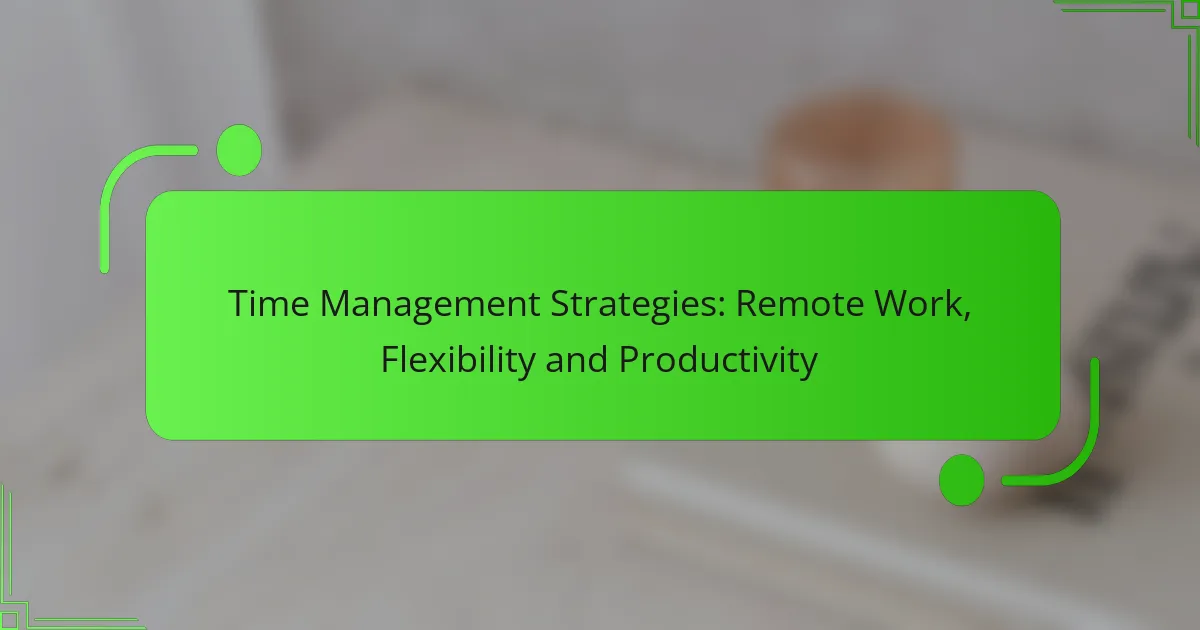Effective time tracking is essential for enhancing productivity and optimizing project management. By utilizing the right tools and metrics, individuals and teams can gain valuable insights into their time usage, identify inefficiencies, and focus on high-value activities. Implementing best practices in time tracking not only streamlines processes but also fosters accountability and resource allocation.
![]()
What are the most effective time tracking tools?
Effective time tracking tools help individuals and teams monitor how they spend their time, leading to better productivity and project management. The right tool can streamline processes, provide insights, and enhance accountability.
Toggl Track
Toggl Track is a user-friendly time tracking tool that allows users to log hours spent on various tasks and projects. It features a simple interface, making it easy to start and stop timers, and offers detailed reports to analyze productivity trends.
Consider using Toggl Track if you prefer a straightforward approach without complex features. It is particularly beneficial for freelancers and small teams looking for a quick way to track billable hours.
Clockify
Clockify is a free time tracking software that enables users to track work hours across projects and tasks. It includes features like time entry, reporting, and team management, making it suitable for both individuals and larger teams.
This tool is ideal for those who want a no-cost solution with robust capabilities. Its reporting features help identify time allocation, which can assist in optimizing workflows and improving efficiency.
Harvest
Harvest combines time tracking with invoicing and expense management, making it a comprehensive tool for businesses. Users can track time, create invoices based on hours worked, and manage project budgets all in one place.
Harvest is particularly useful for agencies and consultants who need to bill clients accurately. However, it comes with a subscription fee, so consider your budget before committing.
RescueTime
RescueTime automatically tracks time spent on applications and websites, providing insights into daily habits. It categorizes activities, helping users understand where their time goes and identify distractions.
This tool is best for individuals looking to improve productivity by gaining insights into their work patterns. It offers features to set goals and alerts, encouraging better time management practices.
TimeCamp
TimeCamp is a versatile time tracking tool that includes features for project management, invoicing, and reporting. It allows users to track time manually or automatically, catering to different work styles.
TimeCamp is suitable for teams that require collaboration features and detailed reporting. Its integration with various project management tools enhances its functionality, making it a strong choice for businesses of all sizes.
![]()
How can time tracking improve productivity?
Time tracking can significantly enhance productivity by providing insights into how time is spent on various tasks. By identifying inefficiencies and optimizing workflows, individuals and teams can focus on high-value activities and reduce wasted time.
Identifying time-wasting activities
Effective time tracking helps pinpoint activities that consume excessive time without contributing to productivity. By analyzing tracked data, users can recognize patterns of procrastination or distractions, such as excessive meetings or social media browsing.
For instance, if a team notices that a significant portion of their day is spent in unproductive meetings, they can take steps to streamline communication, such as adopting shorter stand-up meetings or using project management tools for updates.
Enhancing focus and accountability
Time tracking fosters greater focus by encouraging individuals to be mindful of how they allocate their time. When users know their activities are being monitored, they are more likely to stay on task and avoid distractions.
Additionally, accountability increases as team members can see their contributions and time spent on projects. This transparency can motivate individuals to improve their performance and meet deadlines more consistently.
Facilitating better project management
Time tracking provides project managers with valuable data to assess progress and resource allocation. By understanding how much time is spent on various tasks, managers can make informed decisions about project timelines and team workloads.
For example, if a project is consistently falling behind schedule, managers can analyze time logs to identify bottlenecks and reassign resources accordingly. This proactive approach helps ensure projects remain on track and within budget.

What metrics should be tracked for effective time management?
Effective time management relies on tracking specific metrics that provide insights into productivity and resource allocation. Key metrics include billable vs. non-billable hours, task completion rates, and employee utilization rates, each offering a different perspective on how time is spent and its impact on overall efficiency.
Billable vs. non-billable hours
Billable hours refer to the time spent on tasks that can be charged to clients, while non-billable hours encompass activities that do not generate direct revenue. Understanding the ratio of these hours is crucial for assessing profitability and operational efficiency.
To effectively track these hours, use time-tracking software that distinguishes between billable and non-billable tasks. A common benchmark is aiming for a billable rate of around 60-80% of total hours worked, depending on the industry.
Common pitfalls include failing to accurately categorize tasks or neglecting to account for non-billable hours that contribute to business growth, such as training and development. Regularly review these metrics to ensure a balanced approach to time management.
Task completion rates
Task completion rates measure the percentage of tasks finished within a specific timeframe. This metric helps evaluate productivity and the effectiveness of time management strategies. High completion rates indicate efficient use of time and resources.
To calculate this rate, divide the number of completed tasks by the total number of tasks assigned within a given period, then multiply by 100. A completion rate of 70-90% is generally considered healthy, but this can vary by project type and team dynamics.
To improve task completion rates, prioritize tasks based on urgency and importance. Avoid overloading team members with too many simultaneous tasks, which can lead to burnout and decreased productivity.
Employee utilization rates
Employee utilization rates reflect the percentage of an employee’s available hours that are spent on productive work. This metric is essential for understanding how effectively staff time is being utilized and can help identify areas for improvement.
To calculate utilization, divide the total billable hours by the total available hours and multiply by 100. A typical target for utilization rates is around 75-85%, but this can vary based on industry standards and business models.
To enhance utilization rates, ensure that employees have clear goals and access to the necessary tools and resources. Regularly assess workloads to prevent underutilization or overwork, which can negatively impact morale and productivity.
![]()
What are the best practices for implementing time tracking?
Implementing effective time tracking requires a structured approach that focuses on clear objectives, regular analysis, and team engagement. By following best practices, organizations can enhance productivity and ensure accurate reporting of work hours.
Setting clear goals and expectations
Establishing clear goals and expectations is crucial for successful time tracking. Define what tasks need to be tracked and the desired outcomes, such as improving project timelines or identifying bottlenecks. This clarity helps team members understand their responsibilities and the importance of accurate time reporting.
Consider using SMART criteria (Specific, Measurable, Achievable, Relevant, Time-bound) to set these goals. For example, aim to reduce project completion times by 15% over the next quarter by closely monitoring task durations.
Regularly reviewing time data
Regular reviews of time data are essential for identifying trends and areas for improvement. Schedule weekly or bi-weekly meetings to analyze the collected data, focusing on how time is allocated across different tasks and projects. This practice allows teams to adjust their strategies based on real-time insights.
Utilize visual tools like charts or dashboards to present the data clearly. For instance, a simple bar chart can show the average time spent on various tasks, making it easier to spot discrepancies and optimize workflows.
Encouraging team buy-in
Encouraging team buy-in is vital for the success of any time tracking initiative. Involve team members in the decision-making process regarding the tools and methods used for tracking time. When employees feel their input is valued, they are more likely to embrace the system.
Provide training sessions to ensure everyone understands how to use the time tracking tools effectively. Highlight the benefits, such as reduced overtime and better workload management, to motivate the team to participate actively in the process.
![]()
How do time tracking methods vary across industries?
Time tracking methods differ significantly across industries due to varying project requirements, team structures, and client expectations. Understanding these differences can enhance efficiency and ensure that the chosen method aligns with specific operational needs.
Freelancers vs. corporate teams
Freelancers typically use simpler time tracking tools that focus on billable hours and project management, often relying on apps like Toggl or Harvest. These tools allow for easy invoicing and client communication, which is crucial for independent contractors.
In contrast, corporate teams often implement more comprehensive time tracking systems that integrate with larger project management software. These systems may include features for resource allocation, performance metrics, and compliance with internal regulations, making them suitable for larger organizations.
Creative industries vs. tech companies
In creative industries, time tracking often emphasizes project phases and creative processes. Tools may focus on tracking time spent on brainstorming, revisions, and client feedback, allowing for flexibility in how hours are reported.
Tech companies, however, usually prioritize efficiency and productivity metrics. They often employ time tracking methods that measure coding time, debugging, and deployment phases, using tools like Jira or Asana to align with agile methodologies. This ensures that developers can optimize their workflows and meet tight deadlines.
![]()
What are the challenges of time tracking?
Time tracking can be difficult due to various factors such as employee resistance, inaccurate data collection, and the complexity of task categorization. These challenges can lead to inefficiencies and hinder effective project management.
Employee Resistance
Many employees may view time tracking as a form of micromanagement, leading to pushback against its implementation. This resistance can result in incomplete or inaccurate time entries, which ultimately affects productivity assessments.
To mitigate this, involve employees in the decision-making process and clearly communicate the benefits of time tracking, such as improved workload management and project transparency.
Inaccurate Data Collection
Inaccurate data collection can stem from manual entry errors or inconsistent tracking methods. When employees forget to log their hours or miscategorize tasks, it skews the overall data and can lead to misinformed decisions.
Utilizing automated time tracking tools can help reduce human error. These tools often provide reminders and allow for real-time tracking, ensuring more accurate data collection.
Complexity of Task Categorization
Classifying tasks accurately can be challenging, especially in dynamic work environments where priorities shift frequently. Misclassification can lead to misleading insights about where time is being spent.
To address this, establish clear categories for tasks and provide guidelines on how to classify work. Regularly review and adjust these categories to align with evolving project needs.


